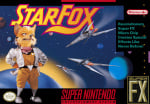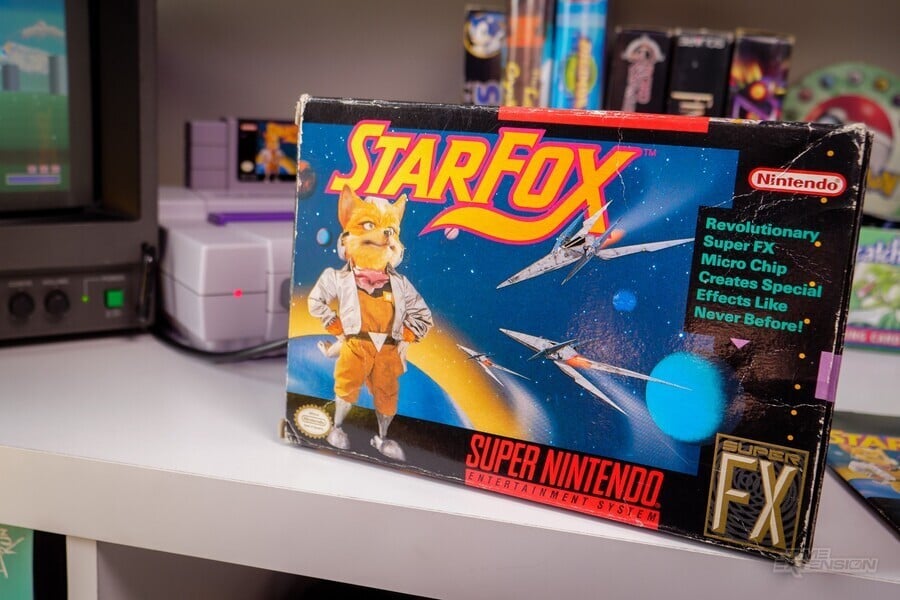
30 years ago, British engineering ingenuity and Japanese design savvy elegantly combined to create what is arguably one of the most technically outstanding releases of the 16-bit era and a truly significant entry in Nintendo's impressive library of software. Star Fox – or Starwing as it was retitled in Europe thanks to the existence of a German company called StarVox – marked Nintendo's first tentative steps into the realm of 3D, a world it had – up to that point – been curiously reluctant to explore. This exploratory thrust wouldn't have been possible without the involvement of Argonaut Software, a small UK-based studio with big ideas famous for its impressive home computer title Starglider.
How Argonaut and Nintendo became partners is a remarkable story of technical wizardry and rule-breaking. When you're a small team operating out of someone's house, you don't just waltz into the HQ of a multi-million dollar industry leader. It takes something special to get on the radar, and Argonaut got Nintendo's attention in the most brazen way imaginable – it defeated the copyright protection mechanism on the popular Game Boy console. "They had the Nintendo logo drop down from the top of the screen, and when it hit the middle, the boot loader would check to see if it was in the right place," recounts Argonaut founder Jez San.
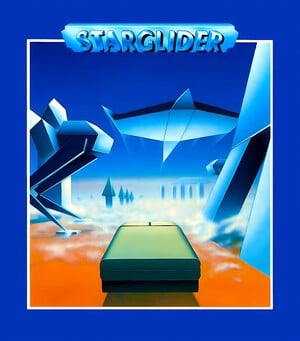
"The game would only start if the word was correctly in place in the ROM. If anyone wanted to produce a game without Nintendo's permission, they would be claiming to use the word 'Nintendo' without a licensed trademark, and therefore Nintendo would be in a position to sue them for trademark infringement. We figured out that with just a resistor and capacitor – around 1 cent's worth of components – we could find out how to beat the protection. The system read the word 'Nintendo' twice – once to print it on the screen at the boot up, and a second time to check if it was correct before starting the game cartridge. That was a fatal mistake, because the first time they read 'Nintendo', we got it to return 'Argonaut', so that was what dropped down the screen. On the second check, our resistor and capacitor powered up, so the correct word 'Nintendo' was in there, and the game booted up perfectly."
Proud of his team's sneaky subterfuge – and the fact that it had gotten 3D visuals working on the monochrome portable – San wasted no time getting the results in front of Nintendo's key staff. "I turned up at Nintendo's booth at that year's CES and tried to find the most senior person at Nintendo at that time, which turned out to be Don James," he says. "I walked up to him and showed him our game, and his jaw dropped – both for the demo itself and also the way it defeated their protection. He roped in Wayne Shirk and Tony Harman to see the demo, and they were extremely impressed with what we could do and our enthusiasm. I told them we wanted to work with them and had a talented team in London, and that we were good at 3D games."
San's almost naive confidence wasn't misplaced – shortly after returning to the UK, he received an official summons from the very top. "They wanted me on a plane to Kyoto first thing in the morning to meet with Nintendo president Hiroshi Yamauchi," he explains. "They flew me out, put me up in the Kyoto Royal Hotel and I met with the big guy. They told me they wanted to do three games with us, and explained their desire for us to teach them our 3D technology. I spent a lot of time with Nintendo management dreaming up what we could do. The business and relationship side took a lot of work and can't be underestimated; Nintendo wanted to feel comfortable working with an outside – and gaijin – company. I had to show them that we could not only deliver the goods but that they could trust us, too."
Such was the level of trust that Argonaut staffers were soon relocated to Nintendo's HQ in Japan, although as programmer Krister Wombell reveals, that had more to do with keeping the lines of communication as tight as possible than anything else. "There was no email, or at least nothing like you'd recognize now," Wombell explains. "When I joined the project, the Argonaut staff were still in London, and a lot of communication was happening over fax. Combined with the eight or nine-hour time difference, that's not a great environment to develop a game in. Dylan Cuthbert, Giles Goddard and myself were sent to Nintendo ostensibly just for four weeks, but after the four weeks were up, we were asked to return for three more months, and that turned into another three months and so on, pretty much until the game was complete."
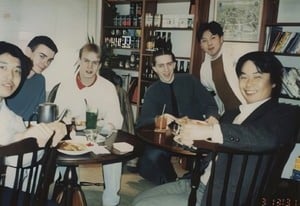
The game in question was Star Fox, an on-rails 3D shooter with anthropomorphised heroes piloting futuristic space fighters – in concept, not a million miles away from the aforementioned Starglider. However, this time around, it would be Nintendo designing the characters, story and core gameplay, with Argonaut's staffers working on the tech side of things. "Argonaut did the 3D technology back in London and provided the lead programmers to live and breathe Nintendo, working directly in EAD's office," explains San. "I think it's safe to say most of the code of the games was written by Argonaut, and Nintendo's input was more on the creative side. Shigeru Miyamoto and his team produced and designed the game, and we did the technical stuff – Argonaut was also responsible for the hardware and software design of the Super FX chip, of course." The Super FX chip – originally codenamed 'MARIO' (Mathematical, Argonaut, Rotation & Input/Output) – was a key part of the project; it was essentially the piece of tech which made Star Fox possible. A custom RISC processor designed entirely by Argonaut's engineers, it granted the SNES fearsome polygon-pushing power – for the time, at least.
Star Fox Programmer Dylan Cuthbert – now the head of PixelJunk studio Q-Games – explains how Argonaut's involvement went beyond just software and technical support. "It was all kicked off during one of our day-long meetings on my initial visit to Kyoto in July 1990 when Nintendo invited Jez to show off the 3D tech Argonaut had been developing on the NES and the Game Boy – the latter of which was my stuff," he says. On a side note, Cuthbert's Game Boy demo would morph into the 1992 Japan-only Game Boy title X, which has the distinction of being the first 3D game on a portable system and recently received a sequel (fittingly coded by Q-Games) called X-Scape on DSiWare.
"Miyamoto showed us a prototype of Pilotwings, which had a simple DSP chip in it to do the perspective calculations," continues Cuthbert. "He said he was disappointed because even with that chip, he couldn't rotate the sprite-based aircraft and had to rely on drawn frames for available angles. Jez knew a guy – which was Ben Cheese – from his work on the abandoned Konix Multisystem and called him there and then in the corner of the meeting room with about thirty Nintendo guys sitting across from us, including Miyamoto, Gunpei Yokoi, Takehiro Izushi, Yasuhiro Minagawa, Genyo Takeda and many other luminaries."
The amazing nature of this situation – two cocksure young British developers talking tech in the heart of the world's most famous video game manufacturer – wasn't lost on Cuthbert. "I was 18, and Jez was 23 or 24 at this time, I think. It was a pretty remarkable moment, made even more remarkable by the fact that at the time, Argonaut was kind of living pay-cheque to pay-cheque; I seem to recall that there were around twelve of us in a house in North London and working out ways to persuade Jez to sign our pay-cheques each month was a running meme."

San's recollection of events is very similar to Cuthbert's. "We'd done a demo of 'NesGlider' in 3D running on the NES," he remembers. "They gave us a SNES to play with – long before its release – and we ported it to that. We showed it to them and said this was pretty much the best 3D their console could produce and that they hadn't designed the SNES with 3D games in mind. Then I suggested that if they wanted better, they should let us design a 3D chip for them. We had never designed a 3D chip before, but we had done some hardware, so it wasn't a completely bullshit idea. I promised them that we could design a chip that would accelerate the 3D graphics by ten times what their wimpy CPU could do."
It was the world's first Graphics Processing Unit, and we have the patents to prove it. At the time that it came out, it was also the world's best-selling RISC microprocessor until ARM became standardised in every cellphone and took the market by storm
San's bluster worked, but he openly admits that he was wildly exaggerating his claims to impress Nintendo. "The 'ten times' figure was a complete over-promise on my part," he reveals. "We didn't really know if that was even possible, but it was a nice target to aim for. Nintendo liked the idea of souping up their hardware – there was even talk of putting it inside the USA version of the SNES, which hadn't been released at that point – but in the end, it had to go into the cartridge to keep the initial cost of the console low. It'd have been awesome if it was as standard on every SNES, so it's a shame that didn't happen."
With Nintendo fully convinced, the next task was to actually create the Super FX chip itself. To do this, San needed the best talent the UK industry could offer at that time. "I knew a few hardware designers like Ben Cheese, not only from the Konix days but also from Sinclair Research and Flare Technology," San recalls. Cheese sadly passed away in 2001, but his talent – and that of the UK-based team that designed and built the chip – was considerable.
"These are the guys that designed much of the custom chips of the early UK computers and game systems, so I knew they were smart," San states. "We designed the Super FX chip in a way no one had designed hardware before – we built the software first and designed our own instruction set to run our software as optimally as possible. No one did it that way around! Instead of designing a 3D chip, we actually designed a full RISC microprocessor that had math and pixel rendering functions, and the rest was run in software. It was the world's first Graphics Processing Unit, and we have the patents to prove it. At the time that it came out, it was also the world's best-selling RISC microprocessor until ARM became standardised in every cellphone and took the market by storm."

Although the graphics produced by the Super FX chip look laughably crude by today's lofty standards, at the time, it was little short of a visual revolution. 3D was commonplace on formats like the Amiga and Atari ST, but on consoles, it was a much rarer sight – hence the astonishing impact Star Fox had on the SNES-owning public. "The Super FX chip had – for once – allowed us to over-promise and yet also over-deliver," San explains. "Instead of achieving just ten times the 3D graphics performance, we actually made things about forty times faster, which was amazing. And in some areas – like 3D math – it was more like a hundred times faster. Super FX was not only capable of 3D math and vector graphics, but it was also able to do sprite rotation and scaling – something that Nintendo really wanted for their own games, like Super Mario World 2: Yoshi's Island."
Of course, all of the engineering expertise in the world won't help when there's a language barrier to contend with. Thankfully, being a Brit inside Nintendo's development heart wasn't as tricky as problem as you might imagine. "We got on well with the people from EAD, so the language barrier didn't seem to cause much friction," reveals Wombell. "It was fun working out what everyone was trying to communicate to each other. Miyamoto, Katsuya Eguchi and Yoichi Yamada spoke better English than we spoke Japanese, so that seemed to be the language of choice."
In the later stages of development, things could be quite nerve-racking because of his tendency to throw everything out the window and start again
Being close to the legendary Miyamoto was an eye-opener for the Argonaut team. "It was amazing to see the way he worked," says San. "He didn't design games up front, like Western game designers would do. He had ideas and liked to play, refine and evolve. He especially liked to iterate – he did a lot of trial and error. It really felt like he would be flying by the seat of his pants much of the time. It was occasionally frustrating because you couldn't schedule the project in advance. You couldn't know how much effort or man-hours were required for any specific feature or element because he didn't really plan in any great detail. He seemed to do everything by what feels right, which means it has to be pretty much fully built before he could evaluate how much fun it was – and then he'd tell you to change this or change that, and so on. He works in a pretty similar way to Peter Molyneux: a game's not done until it's done, and I couldn't really tell you in advance when that will be, and if you make me tell you, I will take a guess and it will be wrong, and I'll miss the deadline by a few years!" Programmer Giles Goddard, head of Steel Diver studio Vitei, concurs that working with Miyamoto wasn't without its tense moments. "In the later stages of development, things could be quite nerve-racking because of his tendency to throw everything out the window and start again."
Despite Miyamoto's habit of throwing a spanner in the works, Wombell feels there was a sharp contrast between Japanese and European game production, and working with Nintendo on Star Fox was very much an educational process for the young British team. "Nintendo was a successful company with plenty of experience developing games," he says. "You could see there was a process going on that was supposed to get us from nothing to a finished game 12 months or so later – it was all very professional. Nintendo had a good idea what make-up the team needed in terms of directors, level designers, graphic artists, sound designers and so on. Pretty much from day one, we knew who and what the team was going to be, and there was always a sense that progress was being made. I think the European studios produced good games but maybe a bit more haphazardly; it took a few more years before we reached that same level of project management."

Argonaut's relationship with Nintendo yielded another surprise – Cuthbert, Goddard and Wombell went from being temporary guests to permanent residents, eventually scoring positions within Nintendo itself, something that was practically unheard of at the time. "Like a lot of things in life, it was mostly a matter of being in the right place at the right time," Goddard says. "I don't think any of us really thought of ourselves as 'hotshot gaijin programmers'. In fact, at the time, I don't think we appreciated how much of a big deal it was. The reason you don't see more gaijin working there is that, like most big Japanese companies, they basically only hire graduates straight out of Japanese universities."
Star Fox was a critical and commercial success, marking the start of a profitable relationship between Argonaut and Nintendo which would result in several other Super FX-powered titles, including a SNES sequel which remained unreleased until 2017. However, while the deal exponentially increased Argonaut's standing within the development community, for San, this period holds bittersweet memories.
"The three-game deal that we had with Nintendo effectively guaranteed us a decent amount of work for several years," he explains. "We grew during that time, but there was also an exclusivity clause which meant that Nintendo pretty much had control of us. We had the benefit of being the only outside company that was working with them for a while, and we were paid our costs plus a royalty. Nintendo kept telling us to stay small and keep working exclusively for them, but they weren't paying us the serious cash that they were paying other partners. Our agreement with Nintendo was mostly a royalty deal that relied on sales. When we wanted to branch out and do other games, they wouldn't let us until the end of our contract."
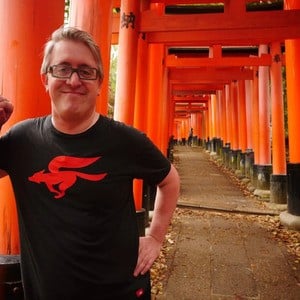
Argonaut had much larger ambitions, and this drive was ultimately what caused the relationship to splinter. "The end came when we pitched to do a 3D platform game, the likes of which had never been done before," continues San. "We mocked up a prototype using Yoshi. It was essentially the world's first 3D platform game and was obviously a big risk – Nintendo had never let an outside company use their characters before, and weren't about to, either. This is the moment the deal fell apart. We later made that game into Croc: Legend of the Gobbos for the PlayStation, Saturn and PC, which became our biggest ever game in terms of sales and also in royalties, since we owned the IP."
The similarity between Croc and Super Mario 64 isn't lost on San, who feels that the early prototype had some influence on the seminal N64 title. "Miyamoto-san went on to make Mario 64, which had the look and feel of our Yoshi game – but with the Mario character, of course – and beat Croc to market by around a year," San says. "Miyamoto-san came up to me at a show afterwards and apologised for not doing the Yoshi game with us and thanked us for the idea to do a 3D platform game. He also said that we would make enough royalties from our existing deal to make up for it. That felt hollow to me, as I'm of the opinion that Nintendo ended our agreement without fully realising it. They canned Star Fox 2 even though it was finished and used much of our code in Star Fox 64 without paying us a penny."
To build excellent 3D games for Nintendo and also produce the first 3D graphics chip – and make it cheap enough to be included in a cartridge. I'm also happy that we were able to illustrate to Nintendo that we were as clever and innovative as they thought we were
To add insult to injury, Nintendo hired some key Argonaut personnel as well. "They also poached some of our best programmers – Dylan, Giles and Krister – which was inevitable since they had lived in Japan for so long that they weren't going to come home anytime soon," says San. "We had taught them 3D games and left them a permanent legacy of being able to make such games. I'm not bitter, but I do feel that Argonaut was used and then spat out by Nintendo. I also feel they undervalued us; we could have done so much more. We had built a Virtual Reality gaming system for them called Super Visor that would've been awesome, but instead, they canned our project – which was full colour, had head tracking and 3D texture mapping – and released the ill-fated Virtual Boy in its place."
Despite the somewhat downbeat end to the relationship, San remains justifiably proud of what he and his small team at Argonaut achieved with Nintendo three decades ago. "My proudest moment was showing that we could do what we promised," he says. "To build excellent 3D games for Nintendo and also produce the first 3D graphics chip – and make it cheap enough to be included in a cartridge. I'm also happy that we were able to illustrate to Nintendo that we were as clever and innovative as they thought we were."
When you take away the remarkable working relationship between Argonaut and Nintendo, the cutting-edge tech and the somewhat sour conclusion to the tale, what you're left with is a piece of software which radically altered Nintendo's outlook on 3D gaming and gave many players their first dose of the third dimension. "Star Fox was one of the earliest mainstream 3D games and, to many people, maybe the first time they'd been exposed to 3D graphics," says Wombell. "By today's standards, we didn't have a great deal of polygons to work with, and it took a leap of imagination to associate those polygons with real-world objects. I wasn't sure how that was going to go across – I loved it, but it was great to see the reception we got from gamers."
This feature originally appeared on Eurogamer and is published in an updated form here with kind permission.

